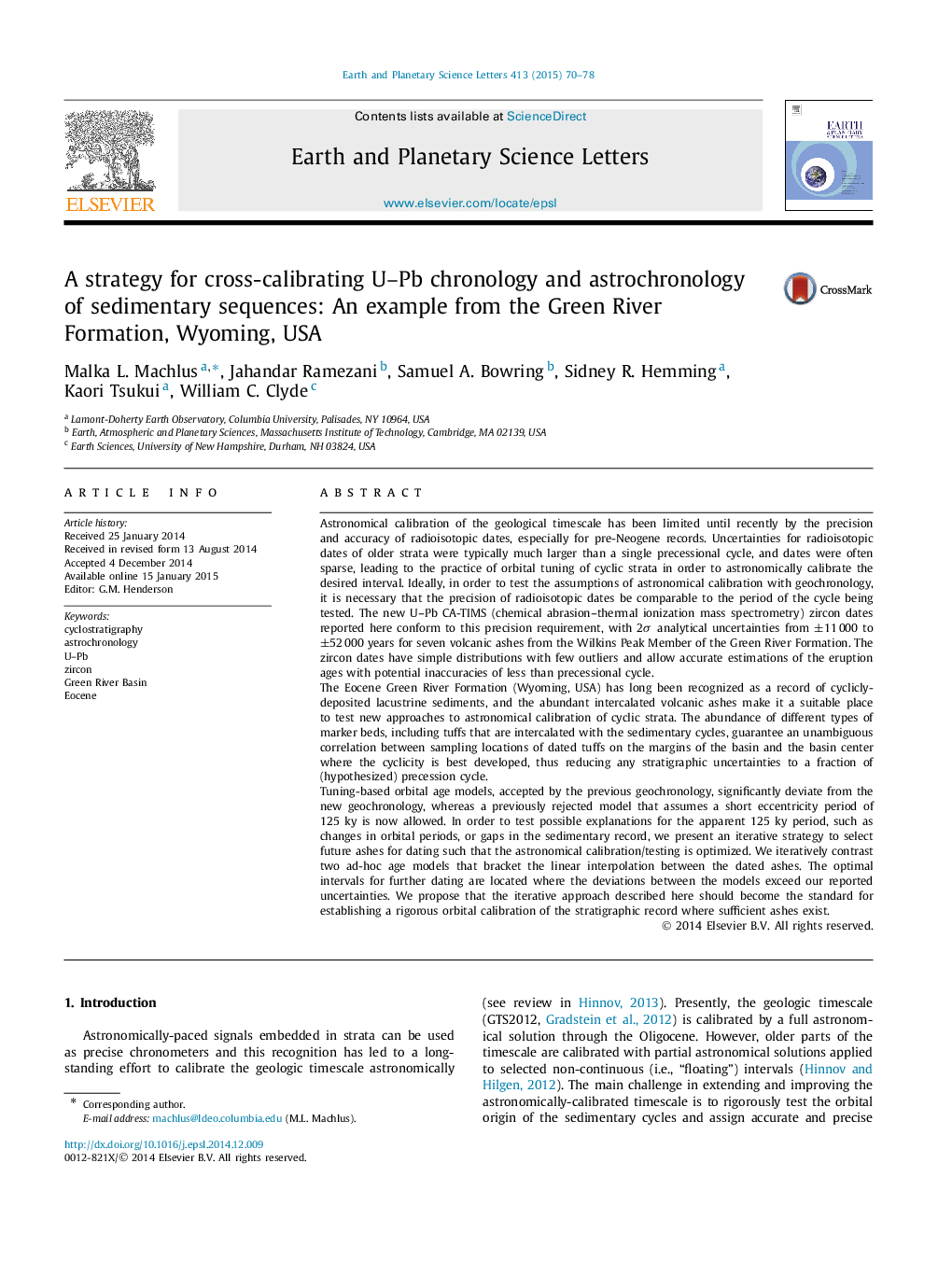| کد مقاله | کد نشریه | سال انتشار | مقاله انگلیسی | نسخه تمام متن |
|---|---|---|---|---|
| 6428594 | 1634743 | 2015 | 9 صفحه PDF | دانلود رایگان |

- Eocene sedimentary cyclicity calibrated by new U-Pb zircon geochronology.
- High-precision (±11-52 ky) data rules out most previous orbitally forced age models.
- Iterative integration of dates with models of sediment accumulation is proposed.
Astronomical calibration of the geological timescale has been limited until recently by the precision and accuracy of radioisotopic dates, especially for pre-Neogene records. Uncertainties for radioisotopic dates of older strata were typically much larger than a single precessional cycle, and dates were often sparse, leading to the practice of orbital tuning of cyclic strata in order to astronomically calibrate the desired interval. Ideally, in order to test the assumptions of astronomical calibration with geochronology, it is necessary that the precision of radioisotopic dates be comparable to the period of the cycle being tested. The new U-Pb CA-TIMS (chemical abrasion-thermal ionization mass spectrometry) zircon dates reported here conform to this precision requirement, with 2Ï analytical uncertainties from ±11000 to ±52000 years for seven volcanic ashes from the Wilkins Peak Member of the Green River Formation. The zircon dates have simple distributions with few outliers and allow accurate estimations of the eruption ages with potential inaccuracies of less than precessional cycle.The Eocene Green River Formation (Wyoming, USA) has long been recognized as a record of cyclicly-deposited lacustrine sediments, and the abundant intercalated volcanic ashes make it a suitable place to test new approaches to astronomical calibration of cyclic strata. The abundance of different types of marker beds, including tuffs that are intercalated with the sedimentary cycles, guarantee an unambiguous correlation between sampling locations of dated tuffs on the margins of the basin and the basin center where the cyclicity is best developed, thus reducing any stratigraphic uncertainties to a fraction of (hypothesized) precession cycle.Tuning-based orbital age models, accepted by the previous geochronology, significantly deviate from the new geochronology, whereas a previously rejected model that assumes a short eccentricity period of 125 ky is now allowed. In order to test possible explanations for the apparent 125 ky period, such as changes in orbital periods, or gaps in the sedimentary record, we present an iterative strategy to select future ashes for dating such that the astronomical calibration/testing is optimized. We iteratively contrast two ad-hoc age models that bracket the linear interpolation between the dated ashes. The optimal intervals for further dating are located where the deviations between the models exceed our reported uncertainties. We propose that the iterative approach described here should become the standard for establishing a rigorous orbital calibration of the stratigraphic record where sufficient ashes exist.
Journal: Earth and Planetary Science Letters - Volume 413, 1 March 2015, Pages 70-78